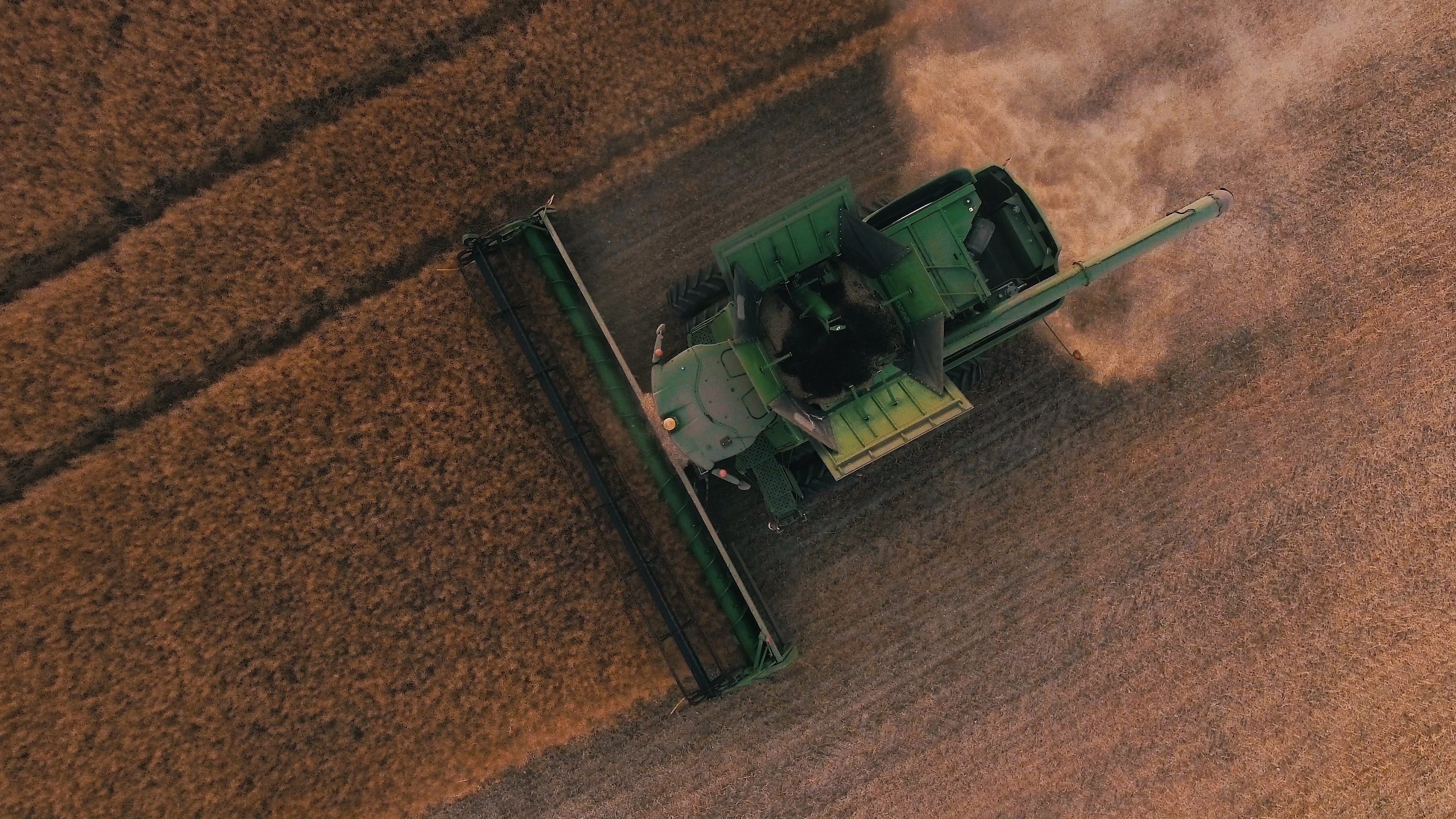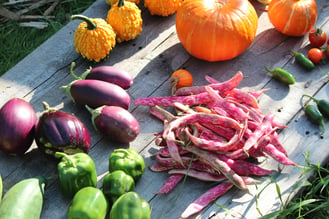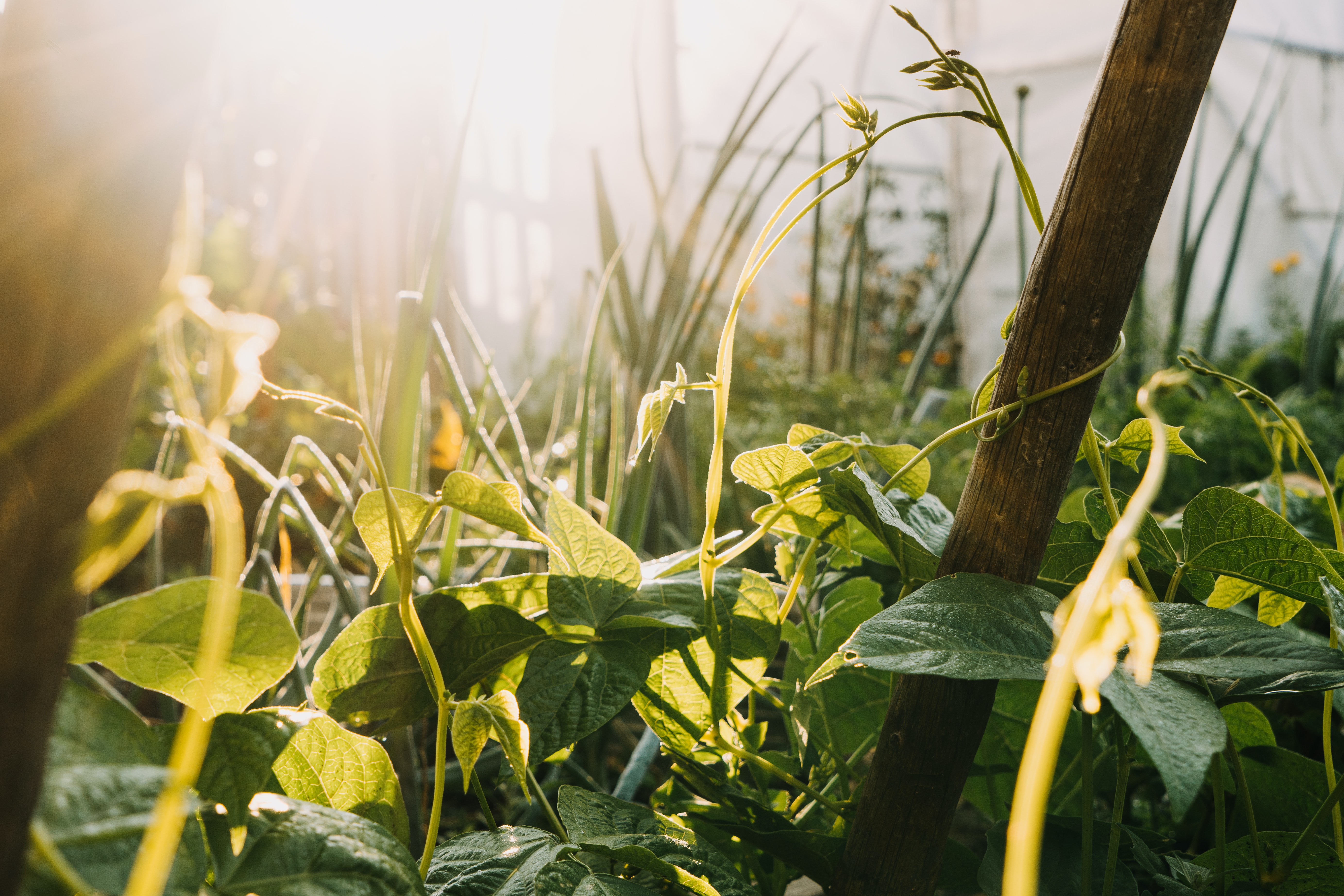So What is Regenerative Agriculture?
Consumers are increasingly looking for sustainable, ethical products. This is a tough challenge for those in the agriculture industry when so many studies pinpoint the sector with some of the highest emissions.
According to the EPA, agriculture is the second highest producer of global greenhouse gas emissions. Now, for a sector that specializes in producing natural products, you may wonder how it’s even possible to reduce our environmental impact.
Thankfully, regenerative agriculture may be the answer we have been looking for.

What is regenerative agriculture?
Regenerative agriculture is a system of principles and practices that farmers can use to reduce their environmental impact. It offers an alternative way of producing food in a holistic way that helps minimize carbon footprints, improve soil quality, and reduce erosion and runoff.
Essentially, it’s a more natural way of farming that looks to remove the issues caused by mass farming methods. It allows farmers to utilize the plant’s natural processes to enrich the soil, increasing nutrient density by increasing organic matter.
Several different farming practices can be classed as regenerative agriculture. This can make it a little confusing for those looking to embrace the practice and get their head around what regenerative farming is.
Let’s look at some examples to help you understand what regenerative farming can look like.
What is regenerative agriculture: No-Till / Minimum Till Farming
Tilling is the farming practice of preparing land using mechanical tools to agitate the soil. The idea is to loosen and aerate the top layer of soil to help the seeds settle better when planting a crop. It also serves to remove weeds, worms, slugs, and other harmful factors that may interrupt the crop.
The problem with tilling is that it severely reduces the soil’s nutrients and decreases the infiltration rate of water. This makes the soil dry and uninhabitable, resulting in runoff and erosion.
Zero/minimal tilling farming techniques reduce or eliminate the need to break up the soil each season. This helps to limit the amount of CO2 that leaves the soil and enters the atmosphere — improving soil quality and making it easier to grow future crops.
Of course, there are some soil types and particular crops that can benefit from tilling, but this regenerative farming practice looks to reduce tilling as much as possible.
What is regenerative agriculture: Permaculture design
Permaculture is much more than a regenerative agriculture practice. It’s a design science, a philosophy, and a way of life. It’s a truly holistic, natural way of farming that respects natural ecosystems and offers many benefits.
As the name suggests, permaculture design is a design process that takes ecology into account rather than focusing on mass production and machinery. Permaculture systems tend to be more efficient and productive than conventional farms. They have better water cycles, higher nutrient levels, and are more sustainable.

6 benefits of regenerative agriculture
The whole idea of regenerative agriculture is to reduce carbon emissions and make the agriculture sector much more environmentally conscious. Yet that’s far from the only benefit.
Help fight climate change
Tackling climate change is not an easy feat. It involves more than simply reducing carbon emissions. We need to start capturing the carbon from the atmosphere and using it to grow new crops.
This will not only help to reduce emissions, but it will also actively work to reverse the damage of climate change.
Better yields
Climate change is hitting the agriculture sector hard. An increase in extreme weather can have disastrous effects on crops, as seen across the US.
Insurance payouts for crops damaged by extreme weather have increased threefold over the past 25 years. Those damaged crops combined with increased insurance premiums are causing significant problems for farmers — forcing many small farms to go out of business.
Regenerative farming helps to combat the effects of climate change thanks to healthy soils. Regenerative farms can allow farmers to grow more in smaller areas and still produce quality yields each season.
Improves biodiversity
Mother Nature knows what she’s doing.
Despite the reliance on chemical pest control, biodiversity is the key to resilient crops. Encouraging a diverse ecosystem can help farmers create an environment that is less susceptible to pests, disease, and climate change. The closer you can get to a fully natural ecosystem, the better your yields can be.
Having livestock provides natural fertilizer, pollinators such as bees and butterflies help increase crop yields, and insect-eating wildlife helps to reduce pests and the plant disease they can bring.
Diversifying your ecosystems can also help protect your income, as you’re spending less on chemicals. And by growing a diverse range of crops, you can protect your income in the event of a crop failure, as you have more crops to help ease the financial burden.
 Boosts the local economy
Boosts the local economy
Not every farm will be able to land that big superstore contract, but that doesn’t mean they can’t make a difference in their local community. Regenerative farming offers communities the chance to become self-sustaining, reduce their reliance on mass production, and encourages customers to support local businesses
Regenerative farming can offer smaller farms a chance to increase their local economy by offering fresh, organic, sustainable foods. Consumers are increasingly looking for more sustainable products and often prefer to buy from a local farmer than the big box stores whenever possible.
It keeps the soil healthy
Have you noticed that it gets harder and harder to maintain crops? That could be due to the way you’re farming.
Tilling, chemical fertilizers, and pesticides can severely detract from the natural goodness the soil contains. Over time, the soil can become completely devoid of nutrients, and this makes it extremely difficult to grow anything. In fact, studies show that 16% of soils have a lifespan of fewer than 100 years.
Regenerative agriculture can slow and even reverse the impact industrial farming has had on soil health. This will ensure crops can grow for longer.
More nutritious food
With healthy, more nutritious soil comes healthier, more nutritious produce.
It should come as no surprise that better growing conditions lead to better foods. While “organic” has become a buzzword, there’s a reason organic produce has become so popular.
Reducing the number of chemicals we use during farming and maintaining soil health will help farmers grow great food with increased nutritional value.

Principles of regenerative agriculture
Now we’ve answered the question what is regenerative agriculture, let’s look at the principles of doing it.
With so many different ways of performing regenerative agriculture, it can be tough to figure out how to go about switching. That being said, there are several principles that farmers can follow to ensure they’re getting the best out of regenerative farming.
Principle 1: Soil Armor
As we have discussed already, regenerative farming puts a large emphasis on soil quality. The first principle backs up the importance of soil by tasking farmers with protecting it.
Covering the soil increases habitat for soil biology which helps to cycle nutrients better and builds an aggregate structure that will accept and hold greater quantities of water. The increased water retention also helps the soil become more resistant to temperature changes and protects against erosion.
Principle 2: Diversity
Basic environment science tells us that creating a monoculture is extremely damaging to the environment. We all know the circle of life and how food chains work, so why have we spent so much time and effort trying to remove the natural processes from our crops?
That’s why the second principle of regenerative agriculture focuses on reintroducing biodiversity to our farms. The more diversity you can support on your farm, the more you will feel the benefits of natural protection.
Principle 3: Continual Live Plant/Root
Traditional farming sees fields completely devoid of life during the offseason. This is one of the reasons we use tilling each season in an attempt to revitalize the soil.
The third principle of regenerative agriculture teaches us that we don’t need to avoid plant life growing between harvesting and planting crops.
The longer you have green, photosynthesizing plants in your fields, the more carbon you will be able to capture. Not only will this help reduce your carbon footprint, but it will also enrich the soil making it far easier to grow a new crop.
Principle 4: Livestock Integration
We have been using livestock to produce natural fertilizer for as long as farming has existed, but livestock offers more benefits than you may realize.
Livestock may be a leading cause of greenhouse gasses, but they can also fight climate change! Livestock can agitate the soil in a less damaging way than tilling, which allows for soil biology to flourish.
Principle 5: Minimizing Soil Disturbance
The final principle of regenerative agriculture focuses once again on the soil. Without soil, we can't grow anything, so we need to make sure we do everything we can to improve and maintain soil health.
If we spend less time tilling and more time letting nature do what it does best, we can feel the benefits of regenerative farming.
What does regenerative agriculture mean for CPGs?
As much as we pretend otherwise, we have a finite amount of resources left on the planet. By adopting regenerative agriculture and supporting farms that use the practices, we can start fighting climate change in a real way. And it doesn’t hurt that consumers prefer to choose products that are made in a sustainable, environmentally friendly way.
Looking to learn more about current CPG trends? Check out our other blog posts, and make sure to come back for the newest tricks and tips to help boost your brand.


